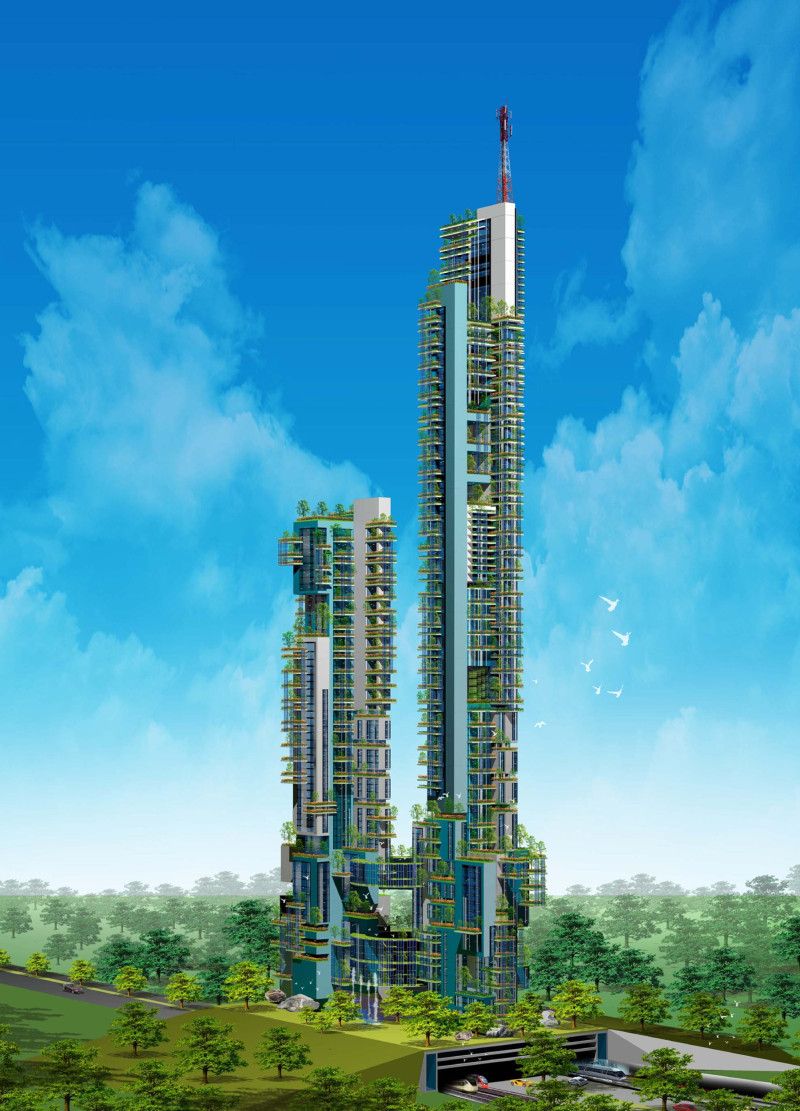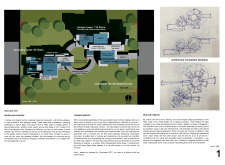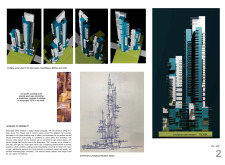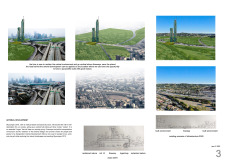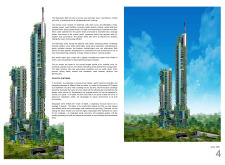5 key facts about this project
Functionally, the building serves multiple purposes, accommodating diverse activities that facilitate community interaction and individual needs. It includes designated spaces for work, leisure, and social engagement, reflecting the increasingly blurred lines between these facets of life in today's urban settings. The design encourages fluid movement between areas, promoting collaboration and fostering a sense of belonging among its occupants.
A notable feature of the project is its spatial organization, which showcases a harmonious flow between public and private zones. Entryways are designed to be inviting, establishing a warm welcome for visitors while allowing for seamless transitions into larger common areas. These spaces are characterized by high ceilings and ample natural light, achieved through strategically placed windows that open the interior to the outside environment. This thoughtful design approach not only enhances the building's connectivity with nature but also supports psychological well-being by emphasizing light and openness.
Material selection plays a crucial role in defining the project's character. The use of reinforced concrete provides structural durability, enabling the creation of expansive, open spaces without compromising safety. This is complemented by the introduction of glass elements that maximize transparency and visibility, connecting interior spaces with the landscape. The presence of natural timber elements adds a layer of warmth, balancing the industrial feel of concrete and steel with organic textures. The careful combination of these materials reflects a commitment to sustainability, where every element is not only functional but also ecologically responsible.
Unique design strategies are evident throughout the project. One approach involves the integration of green technologies, such as solar panels and green roofs, which contribute to energy efficiency and environmental stewardship. Additionally, the architects have prioritized passive design principles, utilizing natural ventilation and daylighting to enhance energy performance while maintaining comfort for users. The incorporation of outdoor areas is another significant element, with terraces and gardens designed to blend seamlessly with the surrounding landscape, encouraging outdoor activities and enhancing the overall aesthetic experience of the site.
In terms of architectural language, the project embodies a contemporary style characterized by clean lines and minimal ornamentation, allowing the materials and function to take center stage. This restrained yet elegant vocabulary resonates with the architectural context of its geographical setting, honoring local traditions while boldly pushing boundaries. The creative manipulation of volume and mass lends dynamism to the overall form, creating a structure that responds thoughtfully to its environment while standing as a modern architectural landmark.
Beyond its physical attributes, the project embodies broader ideas related to community and connectivity. By designing spaces that encourage interaction among users, the architecture promotes a sense of place and belonging, essential in today’s fragmented urban landscapes. The focus on communal areas reflects a growing awareness of the need for environments that foster social engagement and collaboration, aligning with contemporary societal values.
For those interested in exploring the intricacies of this architectural endeavor, reviewing the architectural plans, designs, and sections will provide deeper insights into the thought processes and innovative ideas that shaped this project. Engaging with these elements will reveal the meticulous attention to detail and the underlying principles that govern this contemporary work, offering a richer understanding of its significance in the field of architecture.


